Startseite » 3D printing & services » Quality management & quality assurance
Additive manufacturing is also a matter of trust. To offer our customers optimal 3D printing quality at all times, we have developed a multi-stage quality management process for additive manufacturing. This process begins with checking the print data and includes all measures required for documentation and traceability. With our quality assurance in 3D printing, we ensure that every component meets our high standards and the specifications of our customers.
How we ensure 3D printing quality
Tested quality assurance in additive manufacturing
Quality and quality assurance play a very important role in our additive manufacturing activities. For this reason, we have consistently established and expanded our quality assurance measures and our quality management approach to ensure that our 3D printing processes, data security and product quality meet the highest requirements. Given that we know how important quality assurance is for our customers, we regularly have our QA measures reviewed externally and by means of customer audits.
Testing technology for quality assurance in 3D printing Stipulating the highest quality requirements and defining uniform standards are now also playing an increasingly prominent role when it comes to the additive manufacturing of 3D-printed metal parts. We pre-empted this positive development by setting up our own test laboratory back in 2014 and we have been setting standards in quality assurance in 3D printing for many years.
End-to-end quality assurance
In our test laboratory, we monitor powder quality and system stability and carry out tensile tests, density tests and porosity measurements. We also inspect components with the help of scanners and computer tomographs. With this approach, we ensure the consistent quality of the 3D printing process from the raw material to the finished component.
Comprehensively controlled production
FKM customers benefit from the reliability and quality of optimally controlled additive manufacturing. Our laboratory also enables us to offer them new services such as the digitisation of defective components and the rapid re-manufacturing of such parts in one of our plastic or metal materials.
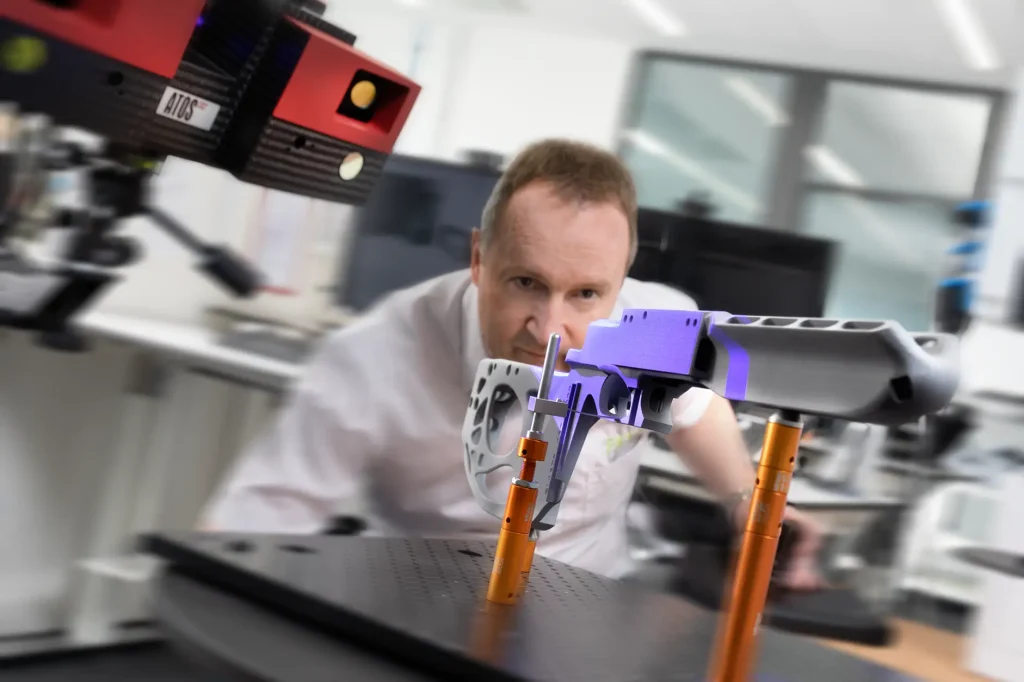

To check the shape and dimensions of 3D-printed parts, we use a special 3D scanner. This device uses optical coordinate measurement (OCM) to capture 3D coordinate points on the surface of the component. These points are then converted into a 3D point cloud and used for quality control or further processing of the component.
A crucial factor for the quality and consistency of a 3D-printed part is its density. A component must fulfil the specifications in terms of density for the required mechanical properties of the component to be reliably maintained. For this reason, we regularly carry out density measurements. We do so by building a test specimen, the so-called density cube, during the 3D printing process. We measure the density of this specimen and use the measured values to detect errors in the pressure setting or the material, which we then, of course, correct immediately.

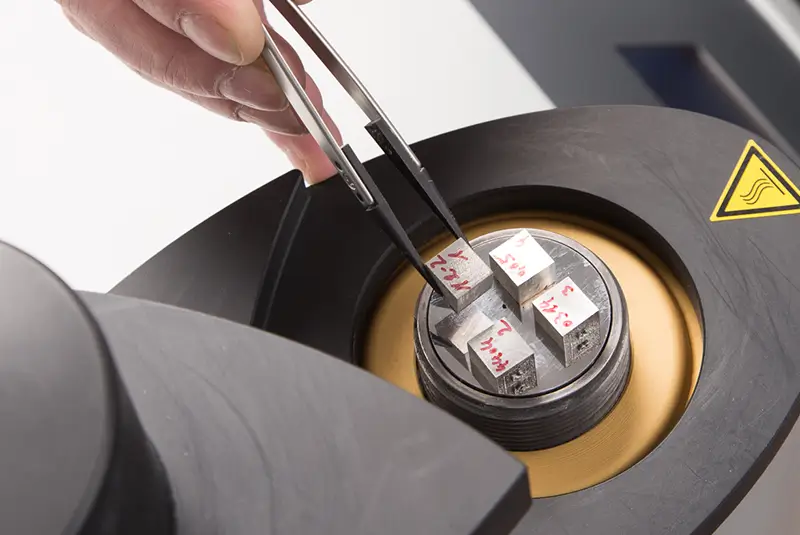

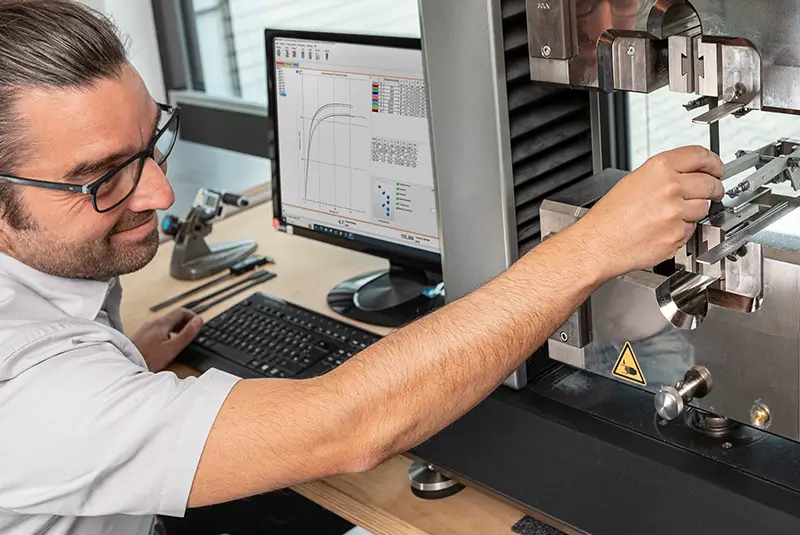
We test the resistance of components to the application of forces by conducting standardised tensile tests. In this process, 3D-printed samples are clamped and pulled apart in a controlled manner. The determined force-strain curve provides information about the mechanical properties of the specimen and allows us to determine its strength, stiffness and elongation at break. The test results also allow us to assess the quality of the bonding layers in the 3D printing blank. Depending on the outcome of these tests, we further optimise the 3D printing process or adjust the material used until the component has the required properties.
In addition to our perfectly coordinated process, the quality of an additively manufactured 3D-printed component especially depends on the 3D printing powder used. For this reason, we carry out special particle measurements in which we examine the particle size and particle quantity. We guarantee that only tested and approved materials are used for component production.

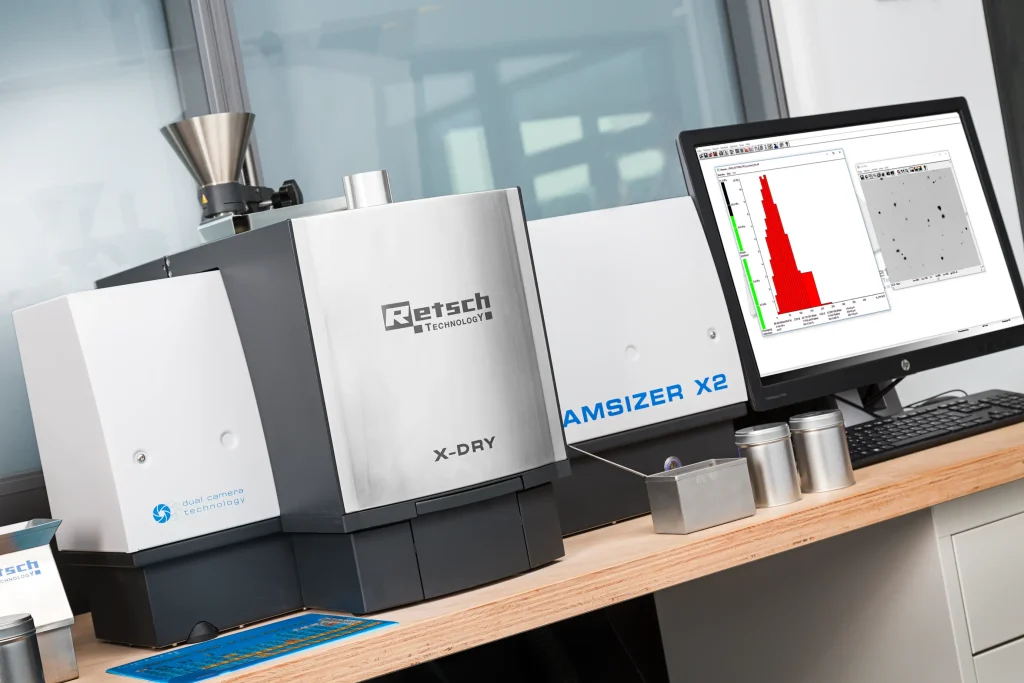

To investigate the hardness of 3D-printed parts, we perform Shore hardness measurements if necessary. When doing so, we determine the resistance of the material to the penetration of a body of a certain shape under a defined spring force: the higher the Shore hardness value, the harder the material. We measure the Shore hardness with a special Shore hardness tester, the measuring pin of which is pressed onto the surface of the material. The result of this measurement is important for determining the suitability of a 3D-printed component for a specific application.
FKM uses a microscope to measure the surface finish of the printed part, such as roughness, scratches or unevenness. The surface data is used for quality control or to optimize the printing process.

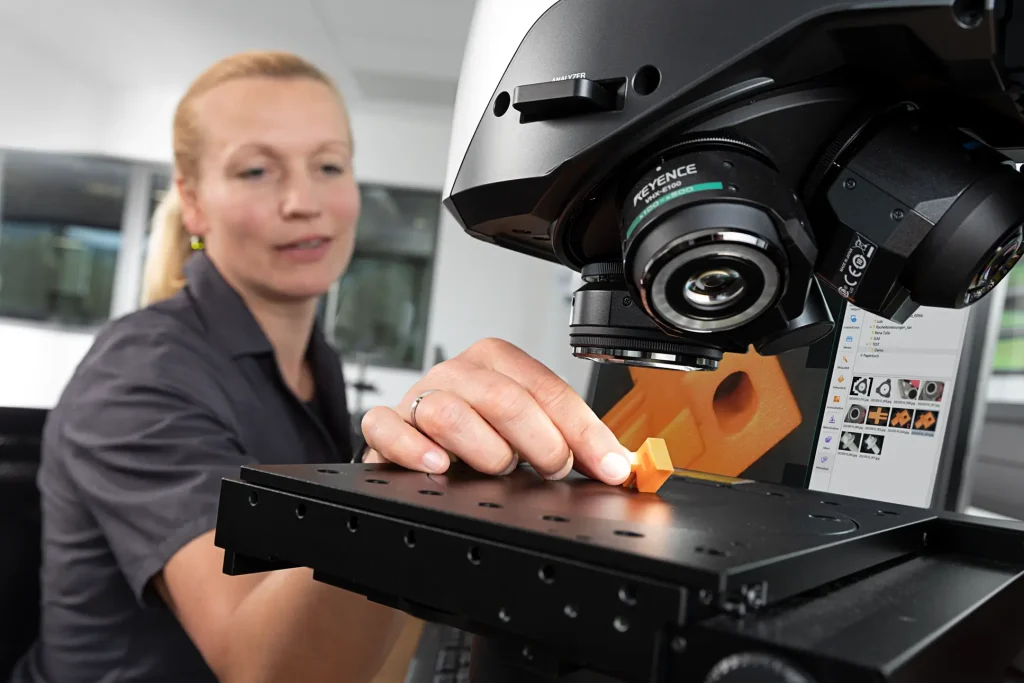

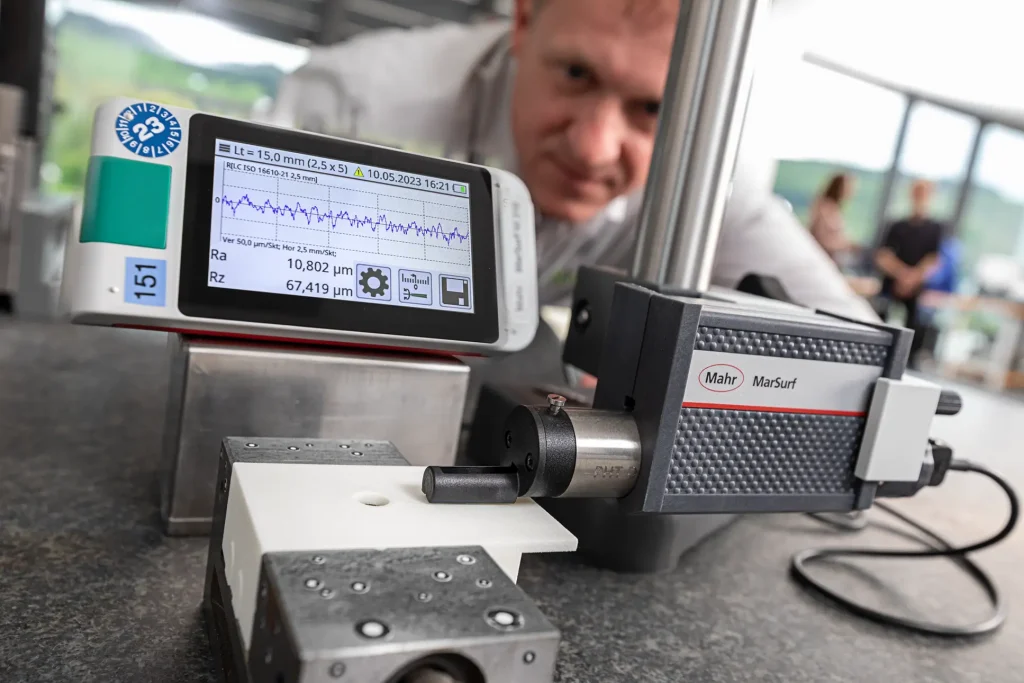
Our roughness measuring device is equipped with a measuring arm that moves over the surface and measures the height of the surfaces at different points. The measured roughness depth is the vertical distance between the highest and lowest points on the surface.
Sie haben Fragen?
Nehmen Sie zu uns Kontakt auf.
Do you have any questions?
Please get in touch with us.